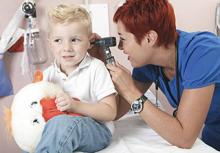First EDition: News for and about the practice of Emergency Medicine
Diagnostic errors top malpractice claims against emergency physicians; ED-initiated buprenorphine ups treatment rates for opioid addiction; More than 75% with sickle cell crises don’t get hydroxyurea; Recognizing human trafficking victims; Indiana HIV outbreak prompts national advisory; Most accidental genital trauma cases manageable in ED; EDs pump up pediatric preparedness; Simplified PESI identified low-risk pulmonary embolism;
A review of 359 cases showed that the vast majority – 82% – were minor and managed expectantly.
“Only 18% required surgical management. Of those, 37% required general anesthesia in the OR, but 63% were adequately evaluated and treated in the ED,” said Dr Dowlut-McElroy of Children’s Mercy Hospitals and Clinics, Kansas City.
About 64% of the patients presented during the day, and 36% presented at night. The most common presenting complaint was bleeding and pain (89% of cases), followed by voiding issues in 8% of cases. No presenting complaint was recorded in the remaining patient charts.
The most common mechanism of injury was straddle injury (73% of cases), followed by non-straddle blunt trauma in 15% of cases, and penetrating injury in the remaining cases, Dr Dowlut-McElroy said.
Injuries included lacerations in 86% of cases, abrasions or contusions in 7%, and hematomas in 3%.
Pediatric genital injuries comprised 0.2%-8% of reported childhood trauma, and despite public health efforts to reduce injuries, the number of such pediatric injuries continues to rise, Dr Dowlut-McElroy said.
Patients included in the current review were identified by a medical database query from January 2000 to July 2014. They were aged 0-18 years and had been treated in the ED for genital trauma; those with obstetrical injuries were excluded.
sworcester@frontlinemedcom.com
EDs pump up pediatric preparedness
BY MARY ANN MOON
FROM JAMA PEDIATRICS
Vitals Key clinical point: Nationally, emergency departments have improved their compliance with guidelines regarding emergency health care for children. Major finding: The overall median weighted pediatric readiness score (WPRS) was 68.9, a solid improvement over the previously reported median WPRS of 55. Data source: A web-based self-reported assessment of pediatric readiness at 4,149 EDs across the country that have approximately 24 million pediatric visits annually. Disclosures: This project was supported by the Emergency Medical Services for Children network and the EMS for Children National Resource Center under the U.S. Department of Health & Human Services. Dr Gausche-Hill and her associates reported having no financial disclosures. |
Pediatric readiness has improved in emergency departments across the country, as measured by EDs’ compliance with 2009 guidelines for emergency care in children, according to a report published online April 13 in JAMA Pediatrics.
In what they described as “the most comprehensive evaluation of pediatric readiness of our nation’s EDs to date,” investigators performed a web-based assessment of 4,137 hospitals’ self-reported compliance with guidelines addressing child-specific emergency care. The overall median weighted pediatric readiness score (WPRS) was 68.9, a solid improvement over the previously reported median WPRS of 55, said Dr Marianne Gausche-Hill of Harbor-UCLA Medical Center, Torrance, Calif., and her associates.
The single most important factor found to enhance pediatric readiness was to designate two people, one of whom is a physician or nurse, as the hospital’s pediatric emergency care coordinator, as recommended by the Institute of Medicine, the researchers wrote. Nearly half (47.5%) of EDs now have a physician coordinator, and 59.3% now have a nurse coordinator, compared with 18% and 12%, respectively, in a previous report. The presence of coordinators quadrupled the chances that a hospital would put important quality-improvement plans in place to address children’s care needs, the investigators said (JAMA Pediatr. 2015 April 13 [doi:10.1001/jamapediatrics.2015.138]).
Other findings included the following:
- Most physicians providing emergency care for children were specifically trained in emergency medicine (88.6%) or pediatric emergency medicine (55.4%) at high-volume hospitals; low-volume hospitals were more likely to have family-medicine-trained physicians doing so (78.9%).
- Mandatory competency evaluations for providing pediatric emergency care were relatively common for nurses (66.6%) but less so for physicians (38.7%) and midlevel staff (18.1%).
- 99.5% of EDs said all staff are trained on the location of pediatric equipment in the ED, including tools to ensure correct sizing of resuscitation equipment and appropriate dosing of medications.
- 83.1% of EDs said they verified the proper location and function of pediatric equipment daily.
- EDs routinely stocked 91% of recommended pediatric equipment. Equipment that was missing in more than 15% of EDs included laryngeal mask airways, umbilical vein catheters, central venous catheters, tracheostomy tubes, size 00 laryngoscope blades, continuous end-tidal carbon dioxide monitoring equipment, pediatric Magill forceps, and infant and child nasopharyngeal airways.
- Only 46.8% of EDs had disaster plans that specifically addressed children, as recommended. Even among high-volume hospitals, which were the most compliant with guidelines, only 67.4% had such disaster plans.
- Approximately one-third of EDs said their providers failed to weigh children and record the weight in kilograms only, as recommended. This safety measure is crucial to preventing drug-dosing errors.
- The most frequently cited barriers to complying with guidelines were the cost of child-specific training (reported by 54.4% of EDs) and a lack of educational resources (reported by 49.0%). Few EDs reported that a lack of interest was a barrier to implementing the guidelines.








